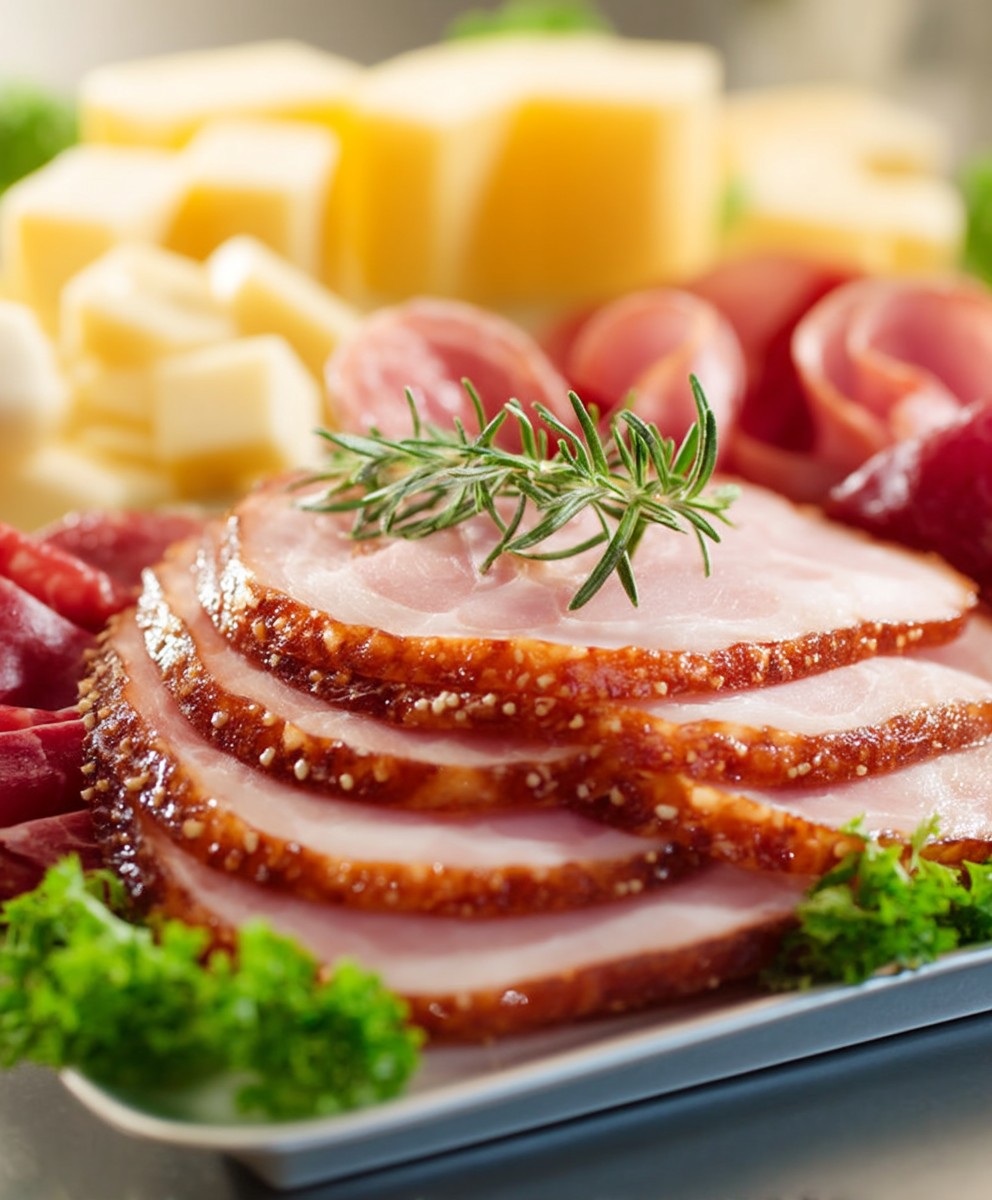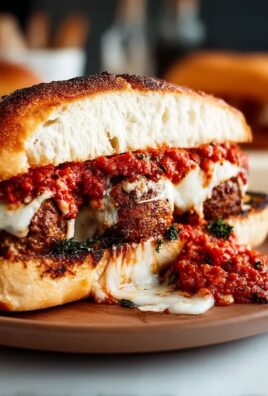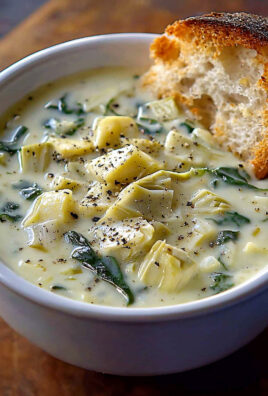Schinken German Ham, oh, where do I even begin? Imagine sinking your teeth into a slice of perfectly cured ham, its smoky aroma filling your senses, the delicate saltiness dancing on your tongue. It’s not just ham; it’s an experience, a journey to the heart of German culinary tradition. And trust me, once you’ve tasted authentic Schinken German Ham, you’ll understand why it’s been a beloved staple for generations.
The history of Schinken is deeply intertwined with German culture, dating back centuries when preserving meat was essential for survival. Different regions developed their unique curing methods, resulting in a diverse range of flavors and textures. From the Black Forest to Westphalia, each type of Schinken tells a story of local traditions and craftsmanship.
But what makes Schinken so irresistible? It’s the perfect balance of savory and smoky notes, the melt-in-your-mouth texture, and the sheer versatility of this incredible ingredient. Whether enjoyed on its own as part of a charcuterie board, nestled in a crusty sandwich, or used to elevate your favorite recipes, Schinken adds a touch of German magic to any dish. Its rich flavor profile makes it a crowd-pleaser, and its convenience ready to eat straight from the package makes it a go-to for busy weeknights or elegant gatherings. So, let’s dive in and explore the wonderful world of Schinken!
Ingredients:
- 1 (10-12 pound) bone-in, skin-on Schinken (German Ham)
- 1 large yellow onion, quartered
- 4 carrots, peeled and roughly chopped
- 4 celery stalks, roughly chopped
- 1 head of garlic, cut in half horizontally
- 2 bay leaves
- 1 tablespoon black peppercorns
- 1 teaspoon dried thyme
- 1 teaspoon dried rosemary
- Water, enough to cover the ham
- For the Glaze:
- 1 cup packed brown sugar
- 1/2 cup Dijon mustard
- 1/4 cup apple cider vinegar
- 2 tablespoons honey
- 1 tablespoon Worcestershire sauce
- 1 teaspoon ground cloves
- 1/2 teaspoon ground cinnamon
Preparing the Ham for Cooking
Okay, let’s get started! First things first, we need to prep our beautiful Schinken. This step is crucial for infusing the ham with flavor and ensuring it’s cooked perfectly.
- Rinse the Ham: Give the Schinken a good rinse under cold water. This helps remove any surface impurities. Pat it dry with paper towels.
- Prepare the Aromatics: In a large stockpot or Dutch oven (big enough to hold the ham comfortably), place the quartered onion, chopped carrots, chopped celery, halved garlic head, bay leaves, black peppercorns, dried thyme, and dried rosemary. These aromatics will create a flavorful broth that will slowly cook and infuse the ham.
- Submerge the Ham: Place the Schinken on top of the aromatics in the pot. Add enough cold water to completely cover the ham. You might need a lot of water, so be prepared! Make sure the ham is fully submerged for even cooking.
- Bring to a Simmer: Place the pot over medium-high heat and bring the water to a gentle simmer. Once it’s simmering, reduce the heat to low, so the water is barely moving. We don’t want a rolling boil, just a gentle simmer.
Cooking the Ham
Now comes the patient part slow cooking! This is where the magic happens, and the ham becomes incredibly tender and flavorful. The cooking time will depend on the size of your ham, so pay close attention.
- Simmering Time: Cover the pot and let the ham simmer gently for approximately 20 minutes per pound. So, for a 10-pound ham, you’ll be simmering it for about 3 hours and 20 minutes. For a 12-pound ham, it’s closer to 4 hours. Check the internal temperature periodically using a meat thermometer.
- Checking for Doneness: The ham is done when a meat thermometer inserted into the thickest part (without touching the bone) registers 140°F (60°C). This ensures it’s heated through but not overcooked.
- Resting Period: Once the ham reaches the desired temperature, carefully remove it from the pot. Place it on a large baking sheet lined with foil. Let it rest for at least 30 minutes before glazing. This allows the juices to redistribute, resulting in a more tender and flavorful ham. Don’t discard the cooking liquid! You can strain it and use it as a base for soups or sauces later.
Preparing the Glaze
While the ham is resting, let’s whip up a delicious glaze! This glaze will add a beautiful shine and a burst of flavor to the Schinken. Feel free to adjust the sweetness and spice levels to your liking.
- Combine Glaze Ingredients: In a medium saucepan, combine the brown sugar, Dijon mustard, apple cider vinegar, honey, Worcestershire sauce, ground cloves, and ground cinnamon.
- Simmer the Glaze: Place the saucepan over medium heat and bring the mixture to a simmer, stirring constantly. Reduce the heat to low and let it simmer for about 5-7 minutes, or until the glaze has thickened slightly. It should be thick enough to coat the back of a spoon.
- Cool Slightly: Remove the glaze from the heat and let it cool slightly before applying it to the ham. This will prevent it from running off too quickly.
Glazing and Baking the Ham
Almost there! This is the final step to create a show-stopping Schinken. The glazing and baking process will caramelize the glaze and give the ham a beautiful, glossy finish.
- Score the Ham (Optional): If your ham has a thick layer of skin, you can score it in a diamond pattern using a sharp knife. Be careful not to cut too deep into the meat. Scoring helps the glaze penetrate the ham and creates a more visually appealing presentation.
- Apply the Glaze: Using a pastry brush, generously brush the glaze all over the ham, making sure to get into any crevices or scores.
- Bake the Ham: Preheat your oven to 325°F (160°C). Place the glazed ham in the preheated oven and bake for 15-20 minutes, or until the glaze is bubbly and caramelized. Keep a close eye on it to prevent burning.
- Re-glaze (Optional): For an extra glossy finish, you can remove the ham from the oven after 10 minutes and apply another layer of glaze. Then, return it to the oven for the remaining baking time.
- Final Rest: Once the ham is done, remove it from the oven and let it rest for another 10-15 minutes before carving. This allows the glaze to set and the juices to redistribute again.
Carving and Serving
Congratulations! You’ve successfully cooked a delicious Schinken. Now it’s time to carve and enjoy the fruits of your labor. Here are a few tips for carving and serving:
- Remove the Skin (Optional): If you prefer, you can remove the skin before carving. Use a sharp knife to carefully separate the skin from the meat.
- Carve Against the Grain: Locate the grain of the meat and carve thin slices against the grain. This will make the ham more tender and easier to chew.
- Serve and Enjoy: Serve the sliced Schinken warm with your favorite sides, such as mashed potatoes, roasted vegetables, sauerkraut, or potato salad. It’s also delicious in sandwiches or as part of a charcuterie board.
Tips for Success:
- Don’t Overcook: Overcooked ham can be dry and tough. Use a meat thermometer to ensure it reaches the correct internal temperature.
- Use Quality Ingredients: The quality of your ingredients will directly impact the flavor of the final dish. Choose a high-quality Schinken and fresh, flavorful aromatics.
- Adjust the Glaze to Your Taste: Feel free to adjust the sweetness and spice levels of the glaze to your liking. You can add more honey for a sweeter glaze or more cloves for a spicier glaze.
- Save the Bone: Don’t throw away the ham bone! You can use it to make a delicious ham broth for soups or stews.
Variations:
- Pineapple Glaze: Substitute the apple cider vinegar with pineapple juice and add some crushed pineapple to the glaze for a tropical twist.
- Maple Glaze: Use maple syrup instead of honey for a richer, more complex flavor.
- Spicy Glaze: Add a pinch of cayenne pepper or a dash of hot sauce to the glaze for a spicy kick.

Conclusion:
So there you have it! This recipe for preparing Schinken German Ham is truly a must-try. It’s not just about following instructions; it’s about experiencing a taste of tradition, a slice of German culinary heritage right in your own kitchen. The depth of flavor achieved through the careful curing and smoking process is simply unparalleled, and the aroma alone will transport you to a cozy German deli.
But why is this particular method so special? Well, beyond the incredible taste, it’s about the satisfaction of creating something truly authentic. Store-bought ham, while convenient, often lacks the character and complexity that comes from a homemade cure. This recipe allows you to control every ingredient, ensuring a product free from unnecessary additives and bursting with natural, savory goodness.
And the versatility! Oh, the possibilities are endless. Serve your Schinken German Ham thinly sliced on a crusty rye bread with a smear of Dijon mustard and some tangy pickles for a classic German sandwich. Or, dice it up and add it to a hearty potato salad for an extra layer of flavor. It’s also fantastic in quiches, frittatas, or even as a pizza topping. Imagine the smoky, salty goodness complementing the creamy cheese and fresh vegetables!
For a truly authentic experience, try pairing your Schinken German Ham with a crisp German beer or a dry Riesling. The acidity of the wine will cut through the richness of the ham, creating a delightful balance on your palate. And don’t forget the sides! Sauerkraut, potato dumplings, and red cabbage are all classic accompaniments that will complete your German feast.
Looking for variations? Experiment with different wood chips for smoking. Applewood will impart a sweeter, fruitier flavor, while hickory will add a more intense, smoky note. You can also adjust the spices in the cure to suit your personal preferences. Add a pinch of red pepper flakes for a touch of heat, or a sprig of rosemary for an herbaceous aroma. The key is to have fun and make it your own!
I truly believe that this recipe will become a staple in your kitchen. It’s not just a meal; it’s an experience. It’s a chance to connect with a rich culinary tradition and create something truly special for yourself and your loved ones.
So, what are you waiting for? Gather your ingredients, clear your schedule, and prepare to embark on a culinary adventure. I promise you won’t be disappointed. The process may seem a bit involved at first, but the end result is well worth the effort.
And most importantly, I want to hear about your experience! Did you try this recipe? What variations did you make? What did you serve it with? Share your photos, tips, and stories in the comments below. I can’t wait to see what you create! Let’s build a community of Schinken German Ham enthusiasts and share our love for this delicious and authentic German delicacy. Happy cooking!
Schinken German Ham: A Guide to Types, Taste, and Serving
A classic German Schinken (ham) recipe, slow-cooked with aromatic vegetables and finished with a sweet and tangy glaze.
Ingredients
- 1 (10-12 pound) bone-in, skin-on Schinken (German Ham)
- 1 large yellow onion, quartered
- 4 carrots, peeled and roughly chopped
- 4 celery stalks, roughly chopped
- 1 head of garlic, cut in half horizontally
- 2 bay leaves
- 1 tablespoon black peppercorns
- 1 teaspoon dried thyme
- 1 teaspoon dried rosemary
- Water, enough to cover the ham
- 1 cup packed brown sugar
- 1/2 cup Dijon mustard
- 1/4 cup apple cider vinegar
- 2 tablespoons honey
- 1 tablespoon Worcestershire sauce
- 1 teaspoon ground cloves
- 1/2 teaspoon ground cinnamon
Instructions
- Rinse the Ham: Rinse the Schinken under cold water and pat dry.
- Prepare Aromatics: In a large stockpot or Dutch oven, place onion, carrots, celery, garlic, bay leaves, peppercorns, thyme, and rosemary.
- Submerge Ham: Place the Schinken on top of the aromatics. Add enough cold water to completely cover the ham.
- Simmer: Bring to a gentle simmer over medium-high heat, then reduce heat to low and cover.
- Simmering Time: Simmer for approximately 20 minutes per pound (3 hours 20 minutes for a 10-pound ham, 4 hours for a 12-pound ham).
- Check for Doneness: The ham is done when a meat thermometer inserted into the thickest part (without touching the bone) registers 140°F (60°C).
- Rest: Remove from pot and place on a baking sheet lined with foil. Let it rest for at least 30 minutes.
- Combine Glaze Ingredients: In a medium saucepan, combine brown sugar, Dijon mustard, apple cider vinegar, honey, Worcestershire sauce, cloves, and cinnamon.
- Simmer Glaze: Simmer over medium heat, stirring constantly, until thickened (5-7 minutes). Let cool slightly.
- Score Ham (Optional): Score the ham in a diamond pattern.
- Apply Glaze: Brush the glaze all over the ham.
- Bake: Preheat oven to 325°F (160°C). Bake for 15-20 minutes, or until glaze is bubbly and caramelized.
- Re-glaze (Optional): For an extra glossy finish, you can remove the ham from the oven after 10 minutes and apply another layer of glaze. Then, return it to the oven for the remaining baking time.
- Final Rest: Let rest for 10-15 minutes before carving.
- Carve and Serve: Remove skin (optional). Carve against the grain and serve warm.
Notes
- Don’t overcook the ham. Use a meat thermometer.
- Use quality ingredients for the best flavor.
- Adjust the glaze to your taste.
- Save the ham bone for broth.





Leave a Comment